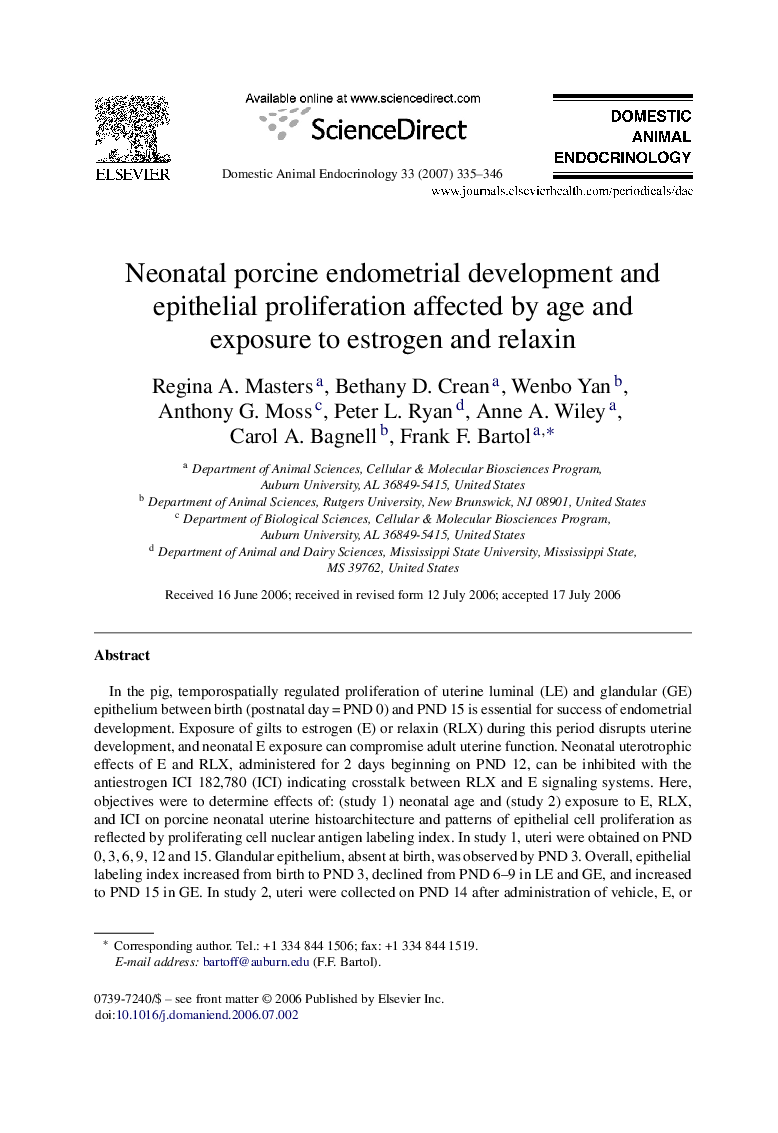| Article ID | Journal | Published Year | Pages | File Type |
|---|---|---|---|---|
| 2394073 | Domestic Animal Endocrinology | 2007 | 12 Pages |
In the pig, temporospatially regulated proliferation of uterine luminal (LE) and glandular (GE) epithelium between birth (postnatal day = PND 0) and PND 15 is essential for success of endometrial development. Exposure of gilts to estrogen (E) or relaxin (RLX) during this period disrupts uterine development, and neonatal E exposure can compromise adult uterine function. Neonatal uterotrophic effects of E and RLX, administered for 2 days beginning on PND 12, can be inhibited with the antiestrogen ICI 182,780 (ICI) indicating crosstalk between RLX and E signaling systems. Here, objectives were to determine effects of: (study 1) neonatal age and (study 2) exposure to E, RLX, and ICI on porcine neonatal uterine histoarchitecture and patterns of epithelial cell proliferation as reflected by proliferating cell nuclear antigen labeling index. In study 1, uteri were obtained on PND 0, 3, 6, 9, 12 and 15. Glandular epithelium, absent at birth, was observed by PND 3. Overall, epithelial labeling index increased from birth to PND 3, declined from PND 6–9 in LE and GE, and increased to PND 15 in GE. In study 2, uteri were collected on PND 14 after administration of vehicle, E, or RLX for 2 days, or following pretreatment with ICI. Alone, E was uterotrophic and adenogenic and increased labeling index in both LE and GE. Both RLX and ICI increased proliferation in GE. Effects of E and RLX were attenuated by ICI, providing further support for crosstalk between these signaling systems in the developing neonatal porcine endometrium.
